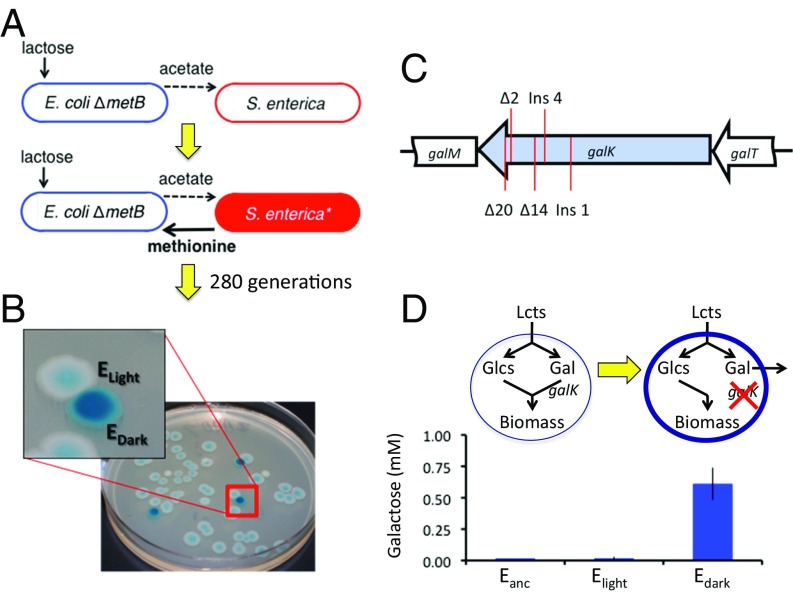Fig. 1.
A novel bidirectional costly mutualism evolved from byproduct secretion. (A) Initially, the ancestral E. coli excreted acetate as a waste product, which S. enterica consumed. Then, S. enterica evolved costly secretion of methionine, the amino acid needed by the E. coli auxotroph. This unidirectional mutualism was evolved for an additional ∼280 generations. (B) After evolving in the coculture, two E. coli phenotypes arose in five of six replicate communities. A novel dark blue colony phenotype was apparent when the community was diluted on rich media plates with X-gal. Light blue E. coli colonies retained the ancestral phenotype. S. enterica remained white on these plates. (C) Dark blue E. coli acquired different galK mutations in each replicate community. (D) The frameshift mutations in galK lead to an inability to metabolize the galactose generated during metabolism, and as a result, abundant galactose was measured in spent media for dark blue E. coli. Bars are the mean excretion of isolates from each community, and error bars represent SE. The abbreviations lcts, glcs, and gal refer to lactose, glucose, and galactose, respectively.

